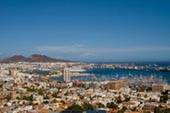A large city located in West Yorkshire, England, United Kingdom, Bradford has a population of around half a million, making it one of the biggest metropolitan boroughs in the country. Situated in the foothills of the Pennines, Bradford was listed as “Bradeford” in the Domesday Book (1086), originally settled during Saxon times, Bradford later grew in prosperity around the wool trade, this increased rapidly during the Industrial Revolution, when it became known as “the wool capital of the world”. Bradford became a municipal borough in the mid-nineteenth century and gained city status in 1897. The wool industry declined during the 20th century and the city experienced considerable immigration during the second half of the century making it a diverse and vibrant community. Worth visiting in Bradford are the National Media Museum, Saltaire (an example of a Victorian village and a World Heritage Site) and Cartwright Hall.
See a map of Bradford here: http://www.my-towns.co.uk/bradford-map.html
And the latest weather in Bradford here: http://www.my-towns.co.uk/bradford-weather.html
